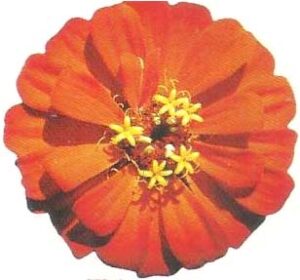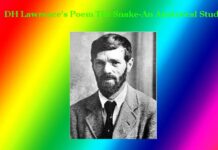Ram Sharma Music and Vision of the Anahat Chakram | A Critical Analysis
Ram Sharma Music and Vision of the Anahat Chakram
Ram Sharma Music and Vision of the Anahat Chakram | A Critical Analysis
‘Music and Vision of the Anahat Chakram’ by Ram Sharma is a spiritual poem on Hindu philosophy. Through this poem, the poet expresses that the soul is the vital spirit of everything that communicates with God. Nature and its activities are the expressions of the Soul and the expression of the Soul is the expression of God. The poem is written in simple language. It is full of onomatopoeias and alliterations.
The poet hears a song, but he cannot understand – where it comes from. The song may be the song of a bird, or it may be the cadence of a lute or the reed of a flute. Later on, the poet thinks and makes out that the song arises in the heart. The song is spontaneous and it is beyond the reach of any human art. Sometimes the poet owns perfect calm of mind and this calmness is the ‘sabbath’ (leisure, peace) of the soul. The soul expresses itself through the boundless creations of God. Sometimes he hears the sound of the conch and the sound of cymbals and thinks that the sounds come from heaven. And what comes from heaven that arises from within. The soul of any human being adores the unseen self (God). By saying so, the poet wants to mean that there is no difference between Soul and God. The bloomed lotus also reflects the Soul and God. Soul and God express themselves as one being or one being as two as Krishna and Kisare are seen together in Brindavon kadamb grove. Each of the two is happy in each other’s love. The bluish colour of Krishna mingles with her whiteness as a cloud is seen bright when it is lightning. While Triveni (here soul, God and nature ) makes union then a cadence of melodious song arises everywhere which is full of love, and he who can realize this union bathes in the infinite love of God.
From the above analysis of the poem, it has come to our view that the poet is more interested in spiritual thought than in the material world. He looks at the material world with the eyes of the mind and heart, not with the physical eyes. This thought expressed in the poem is highly elevated and spiritual and as this philosophy is based on Hindu spirituality, so it proves how high and dignified the Hindu philosophy is.
The poem is written in very simple language. The words employed in the poem echo the sense. In this poem, there are some onomatopoeias as –cling, cling, cling; onkar shrinker of lute; song and gong and cymbal.
There are also some alliterative words such as – songbird singing sabbath of the soul etc.
To conclude is it to say that this piece of poetry is a unique spiritual poem both in theme and style. 0 0 0 Ram Sharma Music and Vision of the Anahat Chakram
Ram Sharma Music and Vision of the Anahat Chakram
Read More: The Poetry of Ram Sharma-Chief Features
N. B. This article entitled ‘Ram Sharma’s Poem, ‘Music and Vision of the Anahat Chakram’-A Critical Analysis’ originally belongs to the book ‘Indian English Poetry Criticism‘ by Menonim Menonimus. Ram Sharma Music and Vision of the Anahat Chakram
Books of Literary Criticism by M. Menonimus:
- World Short Story Criticism
- World Poetry Criticism
- World Drama Criticism
- World Novel Criticism
- World Essay Criticism
- Indian English Poetry Criticism
- Indian English Poets and Poetry Chief Features
- Emily Dickinson’s Poetry-A Thematic Study
- Walt Whitman’s Poetry-A Thematic Study
- Critical Essays on English Poetry
- Tawfiq al-Hakim’s Novel: Return of the Spirit-An Analytical Study
- Tawfiq al-Hakim’s Novel: ‘Yawmiyyat Naib Fil Arayaf’-An Analytical Study
- Analytical Studies of Some Arabic Short Stories
- A Brief History of Arabic Literature: Pre-Islamic Period …
Books of Composition by M. Menonimus:
- Advertisement Writing
- Amplification Writing
- Note Making
- Paragraph Writing
- Notice Writing
- Passage Comprehension
- The Art of Poster Writing
- The Art of Letter Writing
- Report Writing
- Story Writing
- Substance Writing
- School Essays Part-I
- School Essays Part-II
- School English Grammar Part-I
- School English Grammar Part-II..
Related Searches:
- The Individual and Society-Guide Book
- The Individual and Society-DU Notes
- The Golden Treasury of Indo-Anglian Poetry
- The Harp of India-Henry Derozio
- ‘To the Moon’-Henry Derozio
- Night of Slaughter Duryodhan’s Death
- Ramesh Chunder Dutt’s Poem ‘Sita Lost’
- The Wizard Knight’
- ‘King Porus A Legend of Old’
- Michael Madhusudan Dutt
- The Captive Ladie
- Ram Sharma
- Anahata Chakra











